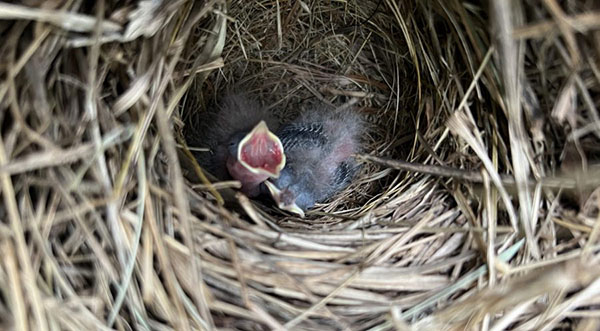Brevard Zoo Welcomes First Florida Grasshopper Sparrow Chicks of the Season
By Space Coast Daily // April 10, 2024
Brevard Zoo has hatched 116 chicks in two years

BREVARD COUNTY, FLORIDA – Brevard Zoo is delighted to share that their Florida grasshopper sparrow season has gotten off on a flying start: the first chicks of the year have been born.
Every birth is crucial for this critically endangered species as they work with their conservation partners to increase their population.
Once they have matured and been medically cleared, the chicks will likely be released into their natural range in Central Florida to boost the population of their species.
Only three years ago, around 100 members of this species were found in their natural range. So far, our Zoo sparrows have surpassed that number, hatching 116 chicks in the two years we’ve been managing the conservation program for this species.
The Florida grasshopper sparrow population in their natural range is on a steep decline due to habitat loss, disease, limited genetic diversity and nonnative fire ants (which can invade nests and feed on chicks).
Peg and Eddie are the parents of our first two sparrow chicks to hatch. This pair, along with three others, were genetically matched by a team of Florida grasshopper sparrow experts to ensure a healthy and genetically diverse population of the sparrows.
The experienced parents are “doing a great job of going to hunt crickets and wax worms to feed to the chicks,” shared Conservation Coordinator Kelly Currier.
Our sparrows live in a behind-the-scenes area. The eggs were incubated for just 10 days before hatching. The other Florida grasshopper sparrow pairs – Ava and Gator, Wild One and Vince, and Zoey and Lando – are at different stages of the nesting process. The males of this species “buzz” and sing special songs as a part of the courtship process as well as to establish their area.
The newly hatched sparrows will stay with their parents for 21 days, after which they will be moved to another behind-the-scenes habitat at the Zoo and be monitored to confirm they are doing well on their own before being released into their natural range. This also gives their parents the opportunity to continue to breed and lay eggs throughout the breeding season, which can go through September.
Brevard Zoo’s chicks will be given color bands on their legs before they leave, which allow biologists to identify and track each bird so they can continue to gather valuable information on this critically endangered species. Birds born at the Zoo have been spotted in their natural habitat, some of which have begun the breeding season as well.
It’s the best possible news, Kelly said. It means the resident parents helped them be strong enough to survive the challenges of the wild and taught their chicks how to be real sparrows on their own.
“We’re so happy to provide them with the right habitat and atmosphere plus the right food items for parents to be able to teach their hatchlings all of these things,” Kelly said.
The Zoo is hopeful for more good news about this nesting season soon.












